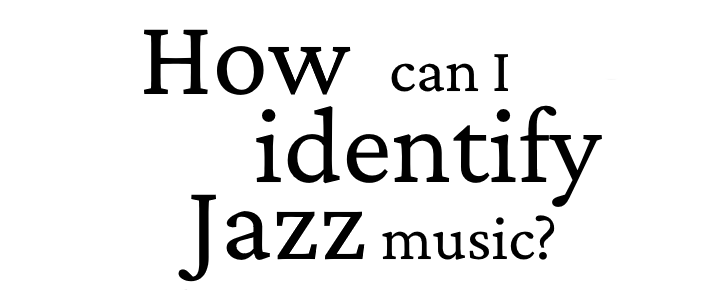Jazz music has been influenced by nearly every musical genre, from blues to rock and classical. This results in a diverse range of jazz genres (i.e., subgenres).
Nearly all forms of jazz (e.g., swing, big band, bebop, and cool jazz), are united by a few central elements that can help you identify them as jazz:
- Distinctive Rhythms: Traditional jazz rhythms are known for their swinging eighth notes, which emphasize the first note in an eighth note pair, while making the second note lighter, as it “swings” toward the next note. Meanwhile, Latin jazz—which is based on Caribbean music—does not swing, but it does incorporate syncopated rhythms, which are frequently drawn from Afro-Cuban traditions.
- Improvisation: The spirit of improvisation unites nearly all forms of jazz music. All members of a jazz band—from the lead-instrument players to the rhythm-section players and the lead vocalists—may be asked to improvise during a jazz tune.
- Harmonic Sophistication: Jazz rarely employs the three-note triads that characterize pop, country, and folk music. The seventh-chord tone appears in nearly all jazz chords, and many include tensions (e.g., ninths, elevenths, and thirteenths).
Instruments
A jazz band can include almost any instrument, as long as it allows the player to improvise.
In jazz ensembles, eight instruments are particularly common:
- Drums: A jazz rhythm section is held together by drums. Jazz drummers typically use a four- or five-piece drum set. In addition to the drum set, Latin jazz ensembles may include hand percussion or cajon.
- Bass: Almost every jazz band employs either a double bass or a bass guitar.
- Jazz Keyboard (Piano or Digital): A jazz keyboard is a traditional part of a jazz combo.
- Guitar: The most common chordal instrument in a jazz ensemble is the guitar, which is second only to the keyboard.
- Trumpet: From the inception of jazz bands in New Orleans, a trumpeter was always present.
- Trombone: Although not as flashy as the trumpet, the trombone has long been a staple of big-band jazz and contemporary ensembles.
- Saxophone: Thanks to its lightning-fast capabilities and relative ease to play in tune, the saxophone is an excellent lead instrument in jazz.
- Lead Vocals: Jazz is less reliant on a lead vocalist than other forms of popular music.

Discover next: What Exactly is Jazz?
Remember that Jazz is about feeling, and celebration, just like any other music. If you love it, then you don’t need to know what t is—or, as Miles Davis put it, you don’t need to identify jazz music:
“I’ll play it first and tell you what it is later.”
